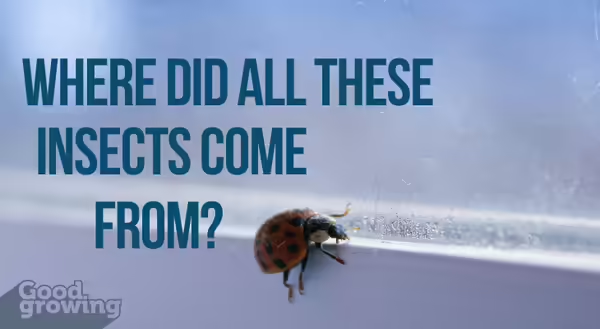
As the crisp cool air of fall approaches, you might enjoy warming up with a sweatshirt or cuddling up with an additional blanket, and you are not alone! Many insects and other pests are making plans to move somewhere warm to survive the winter, and often that place is your home.
The multicolored Asian ladybeetle (Harmonia axyridis) and boxelder bug (Leptocoris trivittatus) are two home invaders that we are all familiar with. For those that need a reminder, Asian ladybeetles vary in color from pale tan to deep reddish-orange and can have anywhere from no spots to many spots, while boxelder bugs are black with red edges on the wings. Boxelder bugs can be a problem in areas with boxelder trees, however, removing boxelder trees is not the most sustainable control of this pest.
An insect that has become more of an inside pest within the last few years is the brown marmorated stink bug (Halyomorpha halys, Stål). BMSB was accidentally introduced in 1998 and has become an invasive species feeding on soybean, fruit, vegetable, and other crops. These insects are “shield” shaped in shades of brown on both the upper and lower body surfaces. To distinguish BMSB from a brown stink bug, look for alternating light and dark bands on the antennae and abdomen.
Of course, we’re all familiar with crickets, house flies, and fruit flies.
We can also have beneficial insects such as centipedes and spiders; however, many may not see these insects as beneficial in the house. Beneficial insects are known for their ability to hunt other insects which may help keep populations down.
Prevent insect invaders
Insects will make their way into your home through cracks or spaces around windows and doors. If you have issues with insects and pest in your home, it is good to inspect your windows to make sure screens have a snug fit and that there are no holes in the screen. Check caulking and seals; most insects can fit into a crack the thickness of a credit card, so check closely as openings do not have to be large.
Also, inspect the areas around your home; remove piles of brush or leaves away from the foundation as these provide habitats for insects looking for winter cover. Piles close to your home allow for an easier transition from living outside to living in your home.
Insecticides are not generally recommended and are not always effective. An insecticide spray can be used to create a chemical barrier along foundations, baseboards, door trim, or the underside of furniture. When making applications, always read the label on insecticides prior to use.
Good Growing Fact: Another effective control tactic is vacuuming pests up and putting them in soapy water. Some insects such as the Asian ladybeetle and stink bug emit an unpleasant defense chemical, so you might consider using a shop vac for this.
Signup for our emails! Want to get notified when new Good Growing posts are available? SIGN ME UP
MEET THE AUTHOR
Katie Parker is a Local Foods and Small Farms Educator with University of Illinois Extension, serving Adams, Brown, Hancock, Pike, and Schuyler counties. Katie provides programming with an emphasis on row crop production, soil fertility, composting, vegetable production, and ornamental horticulture.